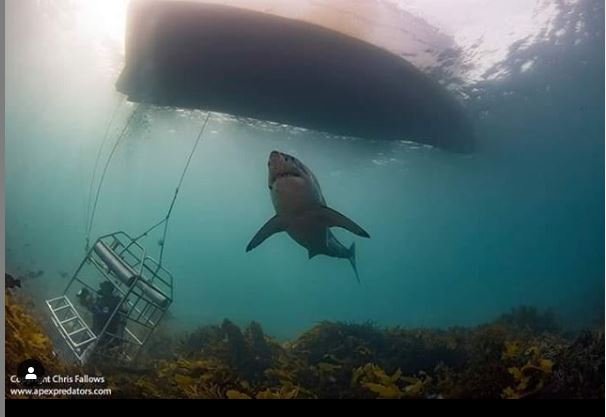Where are all the Great White Sharks?
Gansbaai in South Africa is recognized as the Great White shark Capital of the World! Or is it? The South African Cage Diving Industry's roots started in the late 1980’s in Gansbaai.( https://apexpredators.com/great-white-gansbaai/).
During the 1990s up to 19 Great White sharks on a single dive have been seen. The sharks were daring, and it is easy to see how Gansbaai became known as the Great White Shark Capital with no fewer than 120 000 tourists flocking to the area annually to see the sharks. As the number of shark trips increased, so did the size of the boats and the passenger capacity.
The 17 years that followed saw shark cage diving tourism in Gansbaai grow considerably with 9 different operators.
When you are dealing with wild animals, there are many factors that influence their movements.
The decline of the Great White shark sightings along the coastline of South Africa started in False Bay. Only allowed at Seal Island and its surroundings, False Bay's Great White sharks first moved inshore before leaving the area. The Great Whites are no longer seen in False Bay these days.
A similar event has occurred in Gansbaai and it is sad to say that the shark cage diving boats have not worked shark alley (Geyser Rock and Dyer Island) in the past 5 years. Gansbaai is fortunate in that they are able to work inshore and have followed the sharks. This last year no sightings of Great Whites have been reported until just a few weeks ago. This begs the question "Will Gansbaai’s Great White situation follow False Bay’s lack of Great White sightings?”
Mossel Bay, up until a few weeks ago, was the place to be, with Great White sightings all year round and much more predictability than any other Great White site in South Africa. Enter the shark-killing Orca and within 24 hours, the Great Whites had left the area.
Sharks’ movements can be influenced by several factors.
As is the case with many marine wildlife, no one can say that they truly understand their behavior; however, there are many theories. There is no doubt that the major influencing factor in the behavior of any hunter is food.
In South Africa, the government has issued permits to the Demersal Longlining fishing industry to fish smaller species of shark – the Great White’s main source of food.
Without regulation, these smaller sharks have been over-fished, which resulted in a crash in their populations.
The shark-killing Orca is also responsible for the sharks’ movements as can clearly be seen after predation has taken place on a Great White, all the sharks leave the area almost immediately.
This is not a permanent movement and the sharks tend to return to the area after a short period of weeks or months.
I remember a company traveling to South Africa and tagging Great Whites under the guise of research. These magnificent animals were hauled onto a platform for 20 minutes whilst they were poked, prodded, and tagged. The Great Whites left the areas they were working almost immediately after this and returned weeks later once the area was safe.
What is very clear is that any threat to their survival is acted upon quickly. The ancestry of the Great White shark dates back more than 400 million years, and they are one of evolution's greatest success stories. These imposing animals are uniquely adapted to their ocean environment, ensuring their survival.
